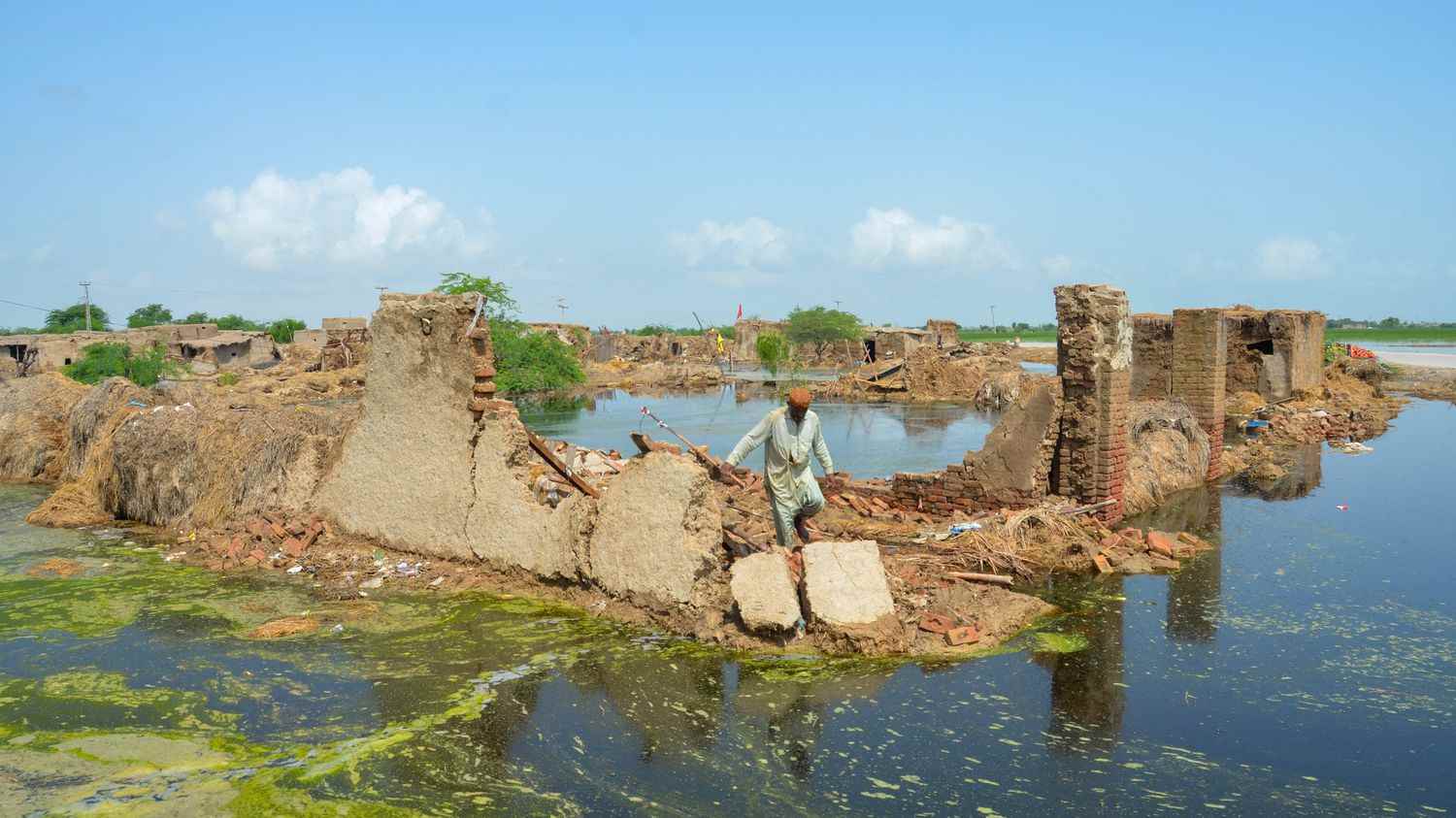Torrential, deadly and devastating rains. In Pakistan, the monsoon, which began in June, caused floods and landslides across the country, disrupting the lives of more than 33 million Pakistanis. The bad weather has already claimed the lives of more than 1,000 people, according to the latest report from National Disaster Management Authority (NDMA). Vehicles, buildings and bridges were washed away.
A historically high number of victims
This year’s monsoon is exceptionally deadly, and the authorities fear a scenario comparable to the floods of 2010, which devastated a fifth of the country. According to an official count published on Saturday August 27 (document in English), 1,033 people have died from drowning or being trapped in collapsed buildings since the middle of June. Among them, 348 children were found dead.

For comparison, the monsoon had caused the death of just over 160 people in 2021, according to a report (document in English) from the Asian Disaster Reduction Center (ADRC). In 2010, nearly 2,000 people were killed by these seasonal rains.
This year, the phenomenon has already forced more than 3 million people from their homes and caused the death of 710,000 farm animals, according to thea International Federation of Red Cross and Red Crescent Societies (IFRC).

Houses, roads and bridges washed away by floods
The material toll is also very heavy, with the destruction of half a million houses across the country, as deplored by the Pakistani Red Crescent. “The situation is getting worse day by day., has alerted Saturday Abrar Ul-Haq, president of the organization. Torrential rains severely restricted transport and traffic. The threat of Covid-19 and the damage caused to vehicles (…) make emergency relief work almost impossible.” In total, thousands of kilometers of road have been destroyed or remain impassable. On social networks, amateur videos filmed in the district of Swat, in northern Pakistan, show the power of the waves and the extent of the damage.
Madyan bridge,KP. Communications ministry informs us that it was built 5 meters above the level of the bridge that went down in the 2010 superflood. Now the water is inundating the bridge. They thought they were building back better by raising it much higher. #PakistanFloods pic.twitter.com/MqQMQsebUE
— SenatorSherryRehman (@sherryrehman) August 27, 2022
Extreme floods continue this morning in Malakand division of #SWAT, #Pakistan pic.twitter.com/JBPDZDcqmT
— The Intel Consortium (@INTELPSF) August 26, 2022
According to regional media, the warning given in certain districts 24 hours before the rise of the waters allowed tens of thousands of Pakistanis to take refuge in safer places, such as schools, universities and around buildings. officials. Since August 26, the country has been in a state of national emergency and the Pakistani army has been mobilized to help the victims.

Humanitarian aid relies desperately on appeals for donations
While the flood peak seemed to have been reached on Sunday, it is time for clearing operations and sheltering populations. THEnational disaster management authority distributes tents, tarpaulins, mosquito nets and hygiene kits in the provinces of Sindh and Baluchistan in particular, in the south of the country, which are among the most affected. In the overloaded NDMA trucks are also life jackets, as the monsoon has not ended and there is still a risk of casualties.
NDMA dispatched emergency relief consignment from KS Relief for flood-affected from Islamabad on August 22, 2022. pic.twitter.com/zZCO3PXNE7
— NDMA PAKISTAN (@ndmapk) August 22, 2022
To carry out their operations, associations and authorities have multiplied calls for donations. Pakistani Prime Minister Shehbaz Sharif has set up his own emergency relief fund to which all citizens can contribute, including Pakistanis living abroad. “The scale of the disaster is greater than expected”, he wrote on Twitter on August 27, after returning from a flooded area. After a terrible drought and this episode of deadly monsoon, the specter of hunger now hovers over certain provinces of the country, where plantations and food stocks have sometimes been completely destroyed by the torrential rains.

